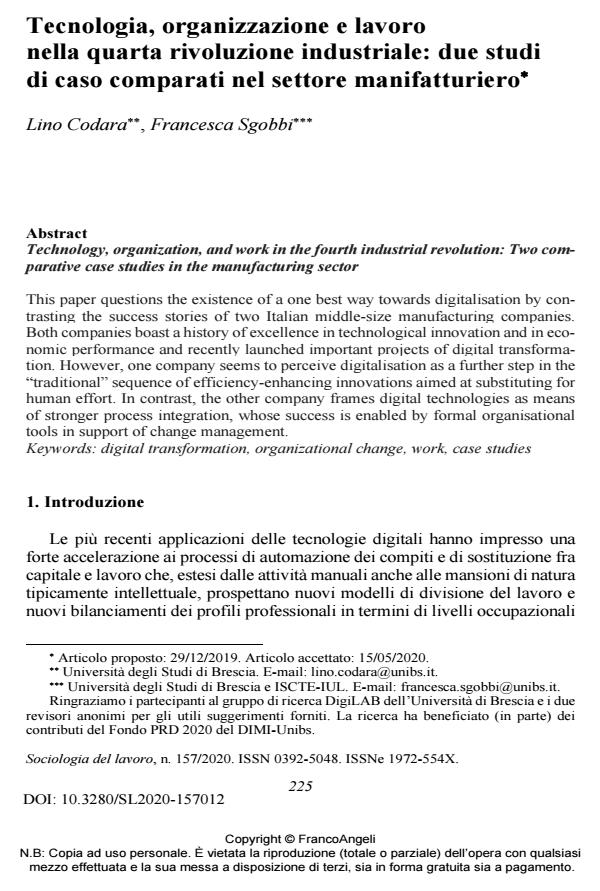Technology, organization, and work in the fourth industrial revolution: Two comparative case studies in the manufacturing sector
Journal title SOCIOLOGIA DEL LAVORO
Author/s Lino Codara, Francesca Sgobbi
Publishing Year 2020 Issue 2020/157
Language Italian Pages 15 P. 225-239 File size 244 KB
DOI 10.3280/SL2020-157012
DOI is like a bar code for intellectual property: to have more infomation
click here
Below, you can see the article first page
If you want to buy this article in PDF format, you can do it, following the instructions to buy download credits

FrancoAngeli is member of Publishers International Linking Association, Inc (PILA), a not-for-profit association which run the CrossRef service enabling links to and from online scholarly content.
This paper questions the existence of a one best way towards digitalisation by con-trasting the success stories of two Italian middle-size manufacturing companies. Both companies boast a history of excellence in technological innovation and in economic performance and recently launched important projects of digital tran-sformation. However, one company seems to perceive digitalisation as a further step in the "traditional" sequence of efficiency-enhancing innovations aimed at substituting for human effort. In contrast, the other company frames digital tech-nologies as means of stronger process integration, whose success is enabled by formal organisational tools in support of change management.
Keywords: Digital transformation, organizational change, work, case studies
- Resilience in a Digital Age Francesca Sgobbi, Lino Codara, pp.309 (ISBN:978-3-030-85953-4)
- Resilience, complexity and digital transformation: three case studies in the valves industry Lino Codara, Francesca Sgobbi, in Journal of Manufacturing Technology Management /2023 pp.1
DOI: 10.1108/JMTM-05-2022-0214
Lino Codara, Francesca Sgobbi, Tecnologia, organizzazione e lavoro nella quarta rivoluzione industriale: due studi di caso comparati nel settore manifatturiero in "SOCIOLOGIA DEL LAVORO " 157/2020, pp 225-239, DOI: 10.3280/SL2020-157012